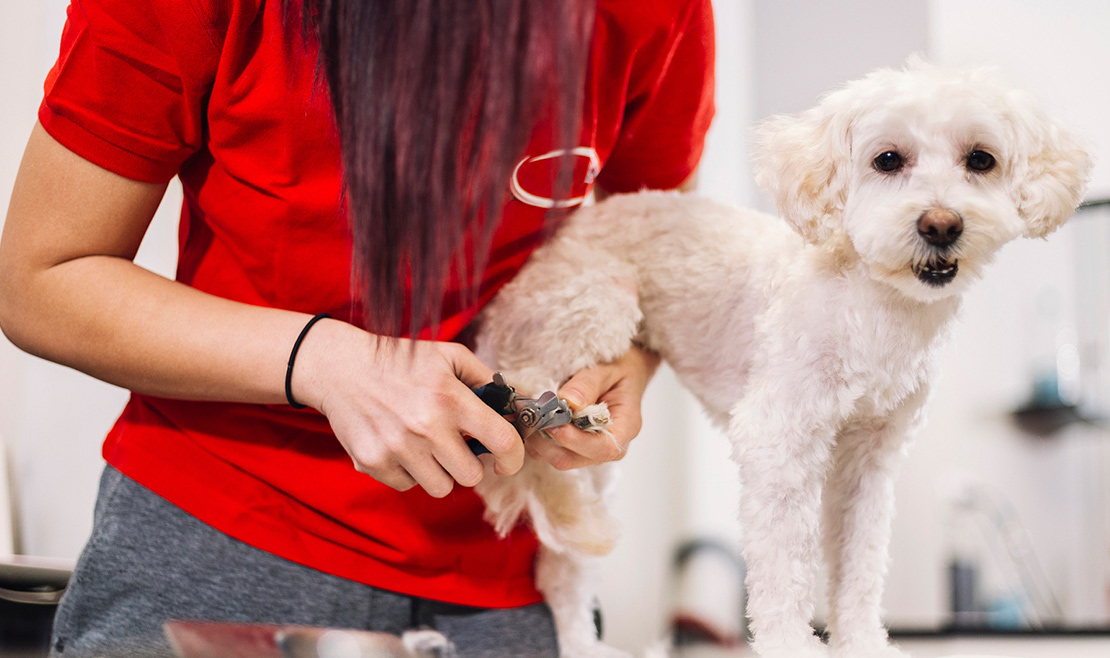Trim Your Pet’s Nails at Home
Published May 21, 2020


Have you seen the videos shared around the internet showing pet owners spreading peanut butter on their foreheads to cut their dog’s nails?
While these videos may have made for some good indoor entertainment, we want to share some tips from our veterinarians that can make nail trims easier (and less messy).
When to cut
It’s recommended to cut your pet’s nails every 1-2 weeks. Not only does this keep the quick from growing further into their nails, frequent trimmings can help them become more comfortable with the task. A good sign of needing a trim is when you hear the tapping as they run along the floor.
How to cut
Prepare yourself and your pet by getting an area and the clippers ready. It can also be helpful to have a treat on hand for the end to help her associate a positive reward. Be sure to use proper pet nail clippers for a safe cut each time. If your pet isn’t used to having their nails trimmed, start by getting your pet used to you touching their paws. If your pet seems agitated or seems like they may scratch or bite, please stop and wait until you can have a professional trim their nails.
Look closely for the quick of the nail, this is what supplies your pet’s paws with blood, and you don’t want to cut too close to this. For some pets, it can be helpful to shine a flashlight from behind the nail to see the quick easier. The quick will appear as a light pink channel in the middle of the nail. In pets with dark nails that prevent easy visualization of the quick, it is best to trim the nail tip where it starts to extend beyond the rest of the nail and curve.
Start to clip the nails with slight pressure first, then a full clip where it feels safe. If the nail feels slightly soft or spongy with slight pressure, you’re too close to the quick–move a little further out and try again.
Remember the dewclaws if your pet has them. They grow a little above the main nails, and can sometimes be hidden by fur.
If you happen to clip too high and your pet’s quick bleeds, you can try to stop the bleeding by applying a small amount of cornstarch.
If you have a hard time trimming all four paws in one session, that’s ok! Try doing only one or two paws at a time to start, and over time you may be able to work up to doing all four at once.



